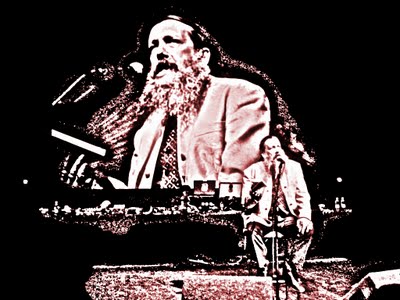CFP: Alan Moore and the Gothic Tradition (edited collection; Sept. 25)
Posted on behalf of Dr. Matt Green.
While Alan Moore's work continues to receive acclaim from within the comics industry and in the media more widely, it remains under-represented within academic research. This edited collection will draw together current scholarly investigations of Moore and his collaborators, paying particular attention to the way in which Moore adapts, appropriates and otherwise responds to previous works from the Gothic tradition. Far from a unified or stable legacy, the Gothic is itself characterised by multiplicity and heterogeneity. For this reason, an examination of the particular ways in which Moore responds to this portion of his cultural inheritance can be expected not only to shed light upon particular aspects of the tradition more broadly, but also to yield insight into the interpretative and artistic decisions embedded in his work.
That Moore's work can be situated in relation to this tradition is evident both in the range of Gothic elements (monsters, demons, supernatural powers, plots motivated by questions of violence and oppression) present at the narrative level in his work, and, at a formal level, in the ways in which Moore and his collaborators draw on artistic techniques and forms from a range of Gothic media. The underlying premise of the collection is that Moore, and the artists with whom he works, engage in a process of dialogue with a diverse array of source material. Accordingly, the collection will address two interrelated topics: how an understanding of the Gothic can enhance our understanding of Moore's work and, conversely, the ways in which the ideas and reading practices engendered by Moore's work might impact on a reflexive analysis of one or more of the traditions out of which it emerges.
Though it is anticipated that the majority of papers will concentrate on the comics, the area in which Moore is most prolific and for which he is best known, this should not deter proposals to examine his work in other media (spoken word/audio recordings, prose fiction, etc).
Papers on any aspect of the relationship between Moore and the Gothic are invited, including, but not limited to, the following areas of enquiry:
Image and credit: Alan Moore avoids confronting his own astral projection at "A Tribute to Robert Anton Wilson" in 2007. Photo by ACB; remix by Gene Kannenberg, Jr.
While Alan Moore's work continues to receive acclaim from within the comics industry and in the media more widely, it remains under-represented within academic research. This edited collection will draw together current scholarly investigations of Moore and his collaborators, paying particular attention to the way in which Moore adapts, appropriates and otherwise responds to previous works from the Gothic tradition. Far from a unified or stable legacy, the Gothic is itself characterised by multiplicity and heterogeneity. For this reason, an examination of the particular ways in which Moore responds to this portion of his cultural inheritance can be expected not only to shed light upon particular aspects of the tradition more broadly, but also to yield insight into the interpretative and artistic decisions embedded in his work.
That Moore's work can be situated in relation to this tradition is evident both in the range of Gothic elements (monsters, demons, supernatural powers, plots motivated by questions of violence and oppression) present at the narrative level in his work, and, at a formal level, in the ways in which Moore and his collaborators draw on artistic techniques and forms from a range of Gothic media. The underlying premise of the collection is that Moore, and the artists with whom he works, engage in a process of dialogue with a diverse array of source material. Accordingly, the collection will address two interrelated topics: how an understanding of the Gothic can enhance our understanding of Moore's work and, conversely, the ways in which the ideas and reading practices engendered by Moore's work might impact on a reflexive analysis of one or more of the traditions out of which it emerges.
Though it is anticipated that the majority of papers will concentrate on the comics, the area in which Moore is most prolific and for which he is best known, this should not deter proposals to examine his work in other media (spoken word/audio recordings, prose fiction, etc).
Papers on any aspect of the relationship between Moore and the Gothic are invited, including, but not limited to, the following areas of enquiry:
- Representations of monstrosity
- The supernatural and/or superhuman
- Violence and terror
- The Sublime
- Sexuality
- Gothic technologies
- Psychology, geography and/or the environment
- Degeneration
- Hybridity
- The double
- Gothic romanticisms
- Magic and the occult
- Trauma
- Taboo
- The uncanny
- Crisis and catastrophe
- Dystopia
- Oppression and/or repression
- The Gothic and sci-fi or detective fiction
Image and credit: Alan Moore avoids confronting his own astral projection at "A Tribute to Robert Anton Wilson" in 2007. Photo by ACB; remix by Gene Kannenberg, Jr.
Labels: A Moore, academic, cfps, essay collections, gothic



